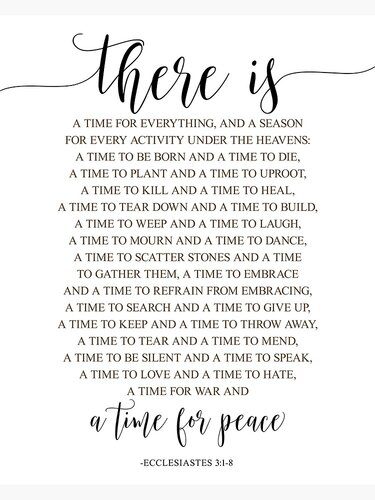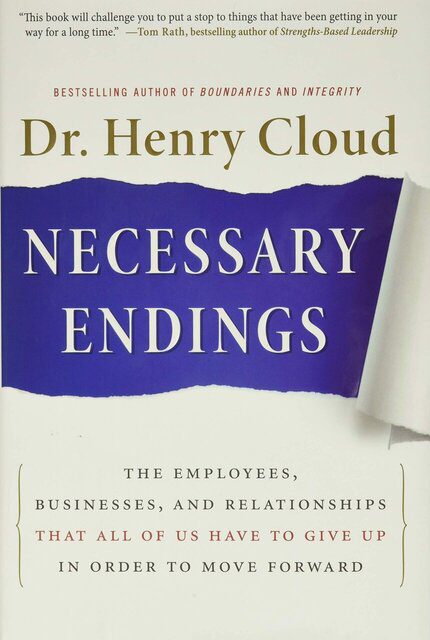Great is the art of the beginning, but greater is the art of the ending — Henry Wadsworth Longfellow.
In Necessary Endings: The Employees, Businesses, and Relationships That All of Us Have to Give Up in Order to Move Forward, Clinical Psychologist and New York Times bestselling author Dr. Henry Cloud shares mindset-altering methods for proactively correcting the bad and the brokenness in our businesses and our lives. Cloud challenges readers to achieve the personal and professional growth they both desire and deserve—and gives crucial insight on how to make those tough decisions that are standing in the way of a more successful business and, ultimately, a better life.
On Endings
Whether we like it or not, endings are a part of life. They are woven into the fabric of life itself, both when it goes well, and also when it doesn’t. On the good side of life, for us to ever get to a new level, a new tomorrow, or the next step, something has to end. Life has seasons, stages, and phases. For there to be anything new, old things always have to end, and we have to let go of them. Infancy gives rise to toddlerhood, and must be forever shunned in order to get to the independence that allows a child to thrive.
Later, childhood must be given up for people to become the adults that they were designed to be. Getting to the next level always requires ending something, leaving it behind, and moving on. Growth itself demands that we move on. Without the ability to end things, people stay stuck, never becoming who they are meant to be, never accomplishing al that their talents and abilities should afford them.

Pruning: Growth Depends on Getting Rid of the Unwanted or the Superfluous
Certainly, there is talent and art behind every beautiful garden. But there is also a method behind the beauty. It is called pruning. Pruning is a process of proactive endings. It turns out that a rosebush, like many other plants, cannot reach its full potential without a very systematic process of pruning. The gardener intentionally and purposefully cuts off branches and buds that fall into any of three categories:
1. Healthy buds or branches that are not the best ones,
2. Sick branches that are not going to get well
3. Dead branches that are taking up space needed for the healthy ones to thrive.
Necessary Ending Type 1
Rosebushes and other plants produce more buds than the plant can sustain. The plant has enough life and resources to feed and nurture only so many buds to their full potential; it can’t bring all of them to full bloom. In order for the bush to thrive, a certain number of buds have to go. The caretaker constantly examines the bush to see which buds are worthy of the plant’s limited fuel and support and cuts the others away.
He prunes them. Takes them away, never to return. He ends their role in the life of the bush and puts an end to the bush’s having to divert resources to them.
In doing so, the gardener frees those needed resources so the plant can redirect them to the buds with the greatest potential to become mature roses. Those buds get the best that the bush has to offer, and they thrive and grow to fullness. But the rosebush could not do this without pruning. It is a necessity of life for rosebushes. Without the endings, you don’t get the best roses. That’s necessary ending type 1.
Necessary Ending Type 2
Some branches are sick or diseased and are not ever going to make it. For a while, the gardener may monitor them, fertilize and nurture them, or otherwise try to make them healthy. But at some point, he realizes that more water, more fertilizer, or more care is just not going to help. For whatever reason, they are not going to recover and become what he needs them to be to create the final picture of beauty he wants for the bush and the garden. These are next to go: necessary ending type 2.
Necessary Ending Type 3
Then there are the branches and buds that are dead and taking up space. The healthy branches need that room to reach their full length and height, but they cannot sprlead when dead branches force them to bend and turn corners; they should be growing straight for the goal. To give the healthy blooms and branches room and an unobstructed path to grow, the dead ones are cut away. This is an example of necessary ending type 3.
The areas of your business and life that require your limited resources—your time, energy, talent, emotions, money—but are not achieving the vision you have for them should be pruned. Just like an unpruned rosebush, your endeavors will be merely average without pruning.
A bush is going to produce more buds than it can sustain, and the gardener has to decide on some basis which ones will remain and get to draw nourishment from the stalk.
Al of your precious resources—time, energy, talent, passion, money—should only go to the buds of your life or your business that are the best, are fixable and are indispensable. Otherwise, average sets in and a meeting or even a date night does not become the rose it was designed to be.
There are three organizing principles that will help you make endings both necessary and normal:
- First, accept life cycles and seasons;
- Second, accept that life produces too much life, and
- Third, accept that incurable illness and sometimes evil are part of life too.
1. Accept Life Cycles and Seasons
Life is composed of life cycles and seasons. Nothing lasts forever. Even the ceremonial liturgy of marriage, a lifelong commitment, acknowledges an end on its first day, “till death do us part.” Life cycles and seasons are built into the nature of everything. When we accept that as a fundamental truth, we can align our actions with our feelings, our beliefs with our behaviors, to accept how things are, even when they die.
2. Accept That Life Produces Too Much Life
One reason pruning is needed is the fact that the bush produces more buds than it can bring to full maturity. Any bush that is alive and thriving is producing more and more buds every cycle. And any person or business that is thriving is doing the same. Life begets life. That is normal. But it can be too much, as well. This second principle will make pruning normal for you as you accept the reality that life produces more:
• Relationships than you can nurture;
• Activities that you can keep up with at any significant level;
• Clients than you can service all in the same way;
• Mentors who once “fit” but whose time has passed;
• Partners whose time has passed;
• Product lines than you can focus on;
• Strategies than you can execute; and
• Stuff than you have room for and can store.
3. Accept That Incurable Sickness and Evil Exist
Your business and your life will change when you really, really get it that some people are not going to change, no matter what you do, and that still others have a vested interest in being destructive. Once you accept that, some very necessary endings get much easier to do. But until then, you might find yourself laboring much longer than you should, still trying to get someone to change, thinking that one more coaching session will do the trick—or one more bit of encouragement, or one more session of feedback or confrontation. Or worse, one more concession.
Pain by its nature is a signal that something is wrong, and action is required.
Been Stuck
Sometimes we are stuck for reasons that are truly outside of our control. But more times than we realize, we are not executing an ending because of internal factors, not external ones.
Stuck Reality
“Neuroscience research shows that your mind actually develops something akin to hardwiring so that you think and behave automatically. So when your hardwiring has adapted to accept some sort of “stuck reality,” you will live out being stuck there. It has become “just normal” to be stuck and put up with a situation that awaits a necessary ending.”
Past Experiences
Our psychological makeup is a collection of past experiences, and these determine how we think about endings. As we have noted, you were designed to do proactive endings, developmentally, throughout life. But if you had many painful endings or dysfunctional maps of endings in your formative years, you might have difficulty with them now.
The best predictor of the future, without other variables, is the past.
False hope
False hope buys us more time to spend on something that is not going to work and keeps us from seeing the reality that is at once our biggest problem and our greatest opportunity. It is our biggest problem because not seeing the reality that needs to be dealt with is what is in between us and what we desire. And it is always our biggest opportunity because if we see it and grasp it, that reality, we can find a real way that will work, one rooted in things as they real y are, to get what we desire.
The Three Kinds of People
These three categories are described by virtually every group that has ever studied human behavior. It is depicted in the great literature of the ages, and I bet it will ring true in your own experience with people as well. It will pass the sniff test, I assure you. There are basically three types of people in the world, or better, three styles of behavior that a person can exhibit in a particular time or context.
1. Wise people
2. Foolish people
3. Evil people
Wise People
When truth presents itself, the wise person sees the light, takes it in, and makes adjustments
Wisdom comes from experience, either the experience of others or of oneself. And to let experience do its work, a person has to be open to receiving the lessons that it has to teach. The person who ultimately does well is the one who can learn from his own experience or the experience of others, make that learning a part of himself, and then deliver results from that experience base. And that requires being open to feedback.
Wisdom is a stance that people take wherein they are open to hearing the truth.
The mature person meets the demands of life, while the immature person demands that life meet her demands. You can see how wisdom plays into maturity, as the wise person would take in the truth and adjust herself to meet whatever change truth is demanding of her. But without that ability, the demand would go unmet, and the person would remain unchanged as a result of the feedback, none the wiser. That is why the proverb says, “Correct a wise person and he will be wiser still .” Feedback helps the wise. They value it.”
The mature person meets the demands of life, while the immature person demands that life meet her demands.
The Foolish Person – Lack of Ownership
Whereas the chief descriptor of the wise person is that when the light shows up, he looks at it, receives it, joins it, and adjusts his behavior to align with the light, the fool does the opposite: he rejects the feedback, resists it, explains it away, and does nothing to adjust to meet its requirements.
The fool tries to adjust the truth so he does not have to adjust to it.
Just as wise does not necessarily mean smart or extremely gifted, foolish does not mean dumb or lacking talent. Ironically, a fool actually may be the smartest person in the room, or the most gifted or charming. Because of that, fools often keep us confused because of their many wonderful attributes. Our attraction to their talents and gifts keeps us hooked and makes it difficult to give up on them. So we continue to try, thinking that “one more conversation” will do the trick. But we get more of the same kind of behavior each time we try to solve a problem or give input, coaching, or correction.
Whereas talking about a problem to a responsible, wise person helps, talking about a problem with a fool does not help at all. Therefore, further talking about problems is not the answer.
Evil People
1. With wise people, talk to them, give them resources, and you wil get a return.
2. With foolish people, stop talking to them about problems; they are not listening. And stop supplying resources; they squander them. Instead, give them limits and consequences.
3. With evil people, to quote a Warren Zevon song, the strategy is “Lawyers, Guns and Money.” The reason? You have to go into protection mode, not helping mode, when dealing with evil people.
Lawyers, Guns, and money usually get their attention.
The bottom line with evil is to stay away, create the firmest protective ending that you can, and get real help to do it. Use your lawyers, law enforcement (that is the guns part), and your financial resources to make sure that you will not be hurt by someone who is trying to destroy you or the things that matter to you. Whereas you talk to wise people about problems and you talk to fools about consequences, do not talk to evil people at all, period.
“You can communicate with me through my attorney” is a phrase that exists for a reason“.
Problems versus Patterns
A problem is something in someone’s performance or behavior that you need to end; it is specific and objective and isolated. A pattern exists when there are problems but they do not stand alone as isolated issues or occurrences.
Necessary Endings:
“You have to be able to let go of the very thing, sometimes the very person, that the right choice may cause you to lose. “I need you to commit or go away.”
Here’s another way to say it: you can’t do the prudent thing if you cannot stand for it all to fall apart. Often, in necessary endings, you have to give something up or be willing to lose something in order to gain it. If there is a destructive pattern in a relationship, for example, and you want to take a stand to end it but refuse to do so out of the fear that the other person may walk away, then you are stuck.
External Resistances
Just because you aren’t paranoid doesn’t mean they aren’t out to get you.
External resistances are those that come from other people. Their challenges and questions are not the helpful kind that a good confidante might provide. Sometimes the people in our business and personal lives who care about us actual y stop or hinder us from making decisions they believe are not good for us. Right or wrong, they are acting out of what they believe are our best interests.
External resistances are resistance from people who have ulterior, self-protective, or self-interested motives.
Self-absorbed Resisters
Sometimes people put up resistance because your decision is going to affect them in some way and they do not want that change. Many times there are endings that are going to affect someone, and that person does not have the kind of character to put his self-interest aside and see what is good for the company or the mission. Passively or actively, this person is on a sabotage mission and is not looking out for you.
This type of person can appear friendly, offering “advice” to “help” you, but he is really a wolf in sheep’s clothing. He will warn you of all of the downsides, all that can go wrong, what you will lose, and so on. Certainly, there are times when we need that kind of advice, but this is not one of them.
Threatened Resisters
Other times, the resistance comes from someone who is threatened personal y by what you are doing. For example, when an addict begins to get sober, addict friends will try to get him to come back and party again because they see the person making the kind of change that they know they need but are afraid to make. So they try to do away with the threat to change that is standing right in front of them by luring him back to being like them.
Whether in business or personal life, when you do something difficult but worthy, it confronts people with their own lives. It activates all of their fears, and they quickly try to tell you the same things that they tell themselves. “It will never work. I know a lot of people who tried to do that, and they were sorry in the end.” The truth is that they are stuck, you are getting unstuck, and you cause them to look in the mirror and face themselves.
“Unconsciously, they realize, If she can do it, I could do it too. But to think about doing that scares me. I think I will talk her out of it, and then we will both be comfortable again.”
The NoNos – John Kotter’s
Skeptics oppose change because they have real questions and problems with the change, but they are open to being convinced. NoNos, he says, are “highly skilled urgency killers. If they cannot undermine attempts at diminishing a contentment with the status quo, they create anxiety or anger and the flurry of useless activity associated with a false sense of urgency” [John Kotter, A Sense of Urgency]. In other words, they are entrenched against change and are not open to having their minds changed under any circumstances.
“If you are in an organization or even an extended family or social circle, NoNos will by definition be against the change that you are trying to make. Understand that, and deal with it as the obstacle it truly is.”
Stuff Happens When You Change
For every action, there is an equal and opposite reaction. When you make a move down a new path, obstacles will come as a result. Getting things done is hard, or more people would be doing it. To accept the fact that endings are difficult and hard to implement. You will be going through new waters, and there will be waves. Big bumpy ones. It takes courage and perseverance to keep going.
Just know that when you hit obstacles, they might just be a good sign that you have done the right thing. It means that you are really making an ending and are merely encountering the tasks of the new season. But now that you have normalized a worldview of seasons, you are ready for that, and it won’t surprise you.
Just know that when you hit obstacles, they might just be a good sign that you have done the right thing. It means that you are really making an ending and are merely encountering the tasks of the new season.
Above All, Don’t Be Squishy
Remember, at this point, you have decided on an ending. So end it and leave it clearly over. Many times people leave a little wiggle room or false hope just to soften the bad news. Do not do that if an ending is what you desire. Otherwise, you are just going to have to do it again. If it is over, make sure that at the end of the conversation, it is over. Don’t leave an open door or window if you don’t want one. Close it now, so you will not have to do it again.
The Paradox of Endings
Your next step always depends on two ingredients: how well you are maximizing where you are right now and how ready you are to do what is necessary to get to the next place. And sometimes that depends on ending some of what is happening today.
“You do your part, have faith, and tomorrow will take care of itself. But remember, for the right tomorrow to come, some parts of today may have to come to a necessary ending.”
All the Best in your quest to get Better. Don’t Settle: Live with Passion.



Comments are closed.